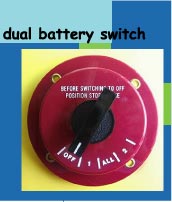
 Custom Search
|
| sails |
| plans |
| epoxy |
| rope/line |
| hardware |
| canoe/kayak |
| sailmaking |
| materials |
| models |
| media |
| tools |
| gear |
| join |
| home |
| indexes |
| classifieds |
| calendar |
| archives |
| about |
| links |
| Join Duckworks Get free newsletter CLICK HERE |
|
|
| Out There |
by Paul Austin - Dallas, Texas - USA Lofting Today - Part Three |
 |
| Part One- Part Two - Part Three - Part Four - Part Five This is the Table of Offsets. These are numbers we created when we measured with the up-and-over method. Tables of offsets came about so that builders could have an accurate record of the proportions of a ship in a handy tablet form rather than keeping huge full sized parts.
We'll start with the corner of the plywood and measure up to the level of the boat's stern. Say that measures out to be 1 foot, or 1-0-0. Now you can see how the Table of Offsets works. By the way, BS does not stand for what you might think, it stands for the Bow at the Sheer.
I've simplified this table. And different designers arrange their tables different ways. I didn't put all the numbers in because I just made them up, anyway! The idea of a table is easy to understand but for some it will take a little practice getting used to going from the table to the floor and then back to the table. For some this will make the process of drawing lines on the floor easier. However, any measurement in the table can be incorrect. When you draw the line, step back, sit down in a chair and look at the line drawn around the offset points. If you don't like it, change the table. Water can't read offsets, it only responds to the shape of the boat. Now we'll go back to Tri-Trainer and fill out a table of offsets.
SS stands for stern sheer, SB stands for stern bottom, and BS stands for bow sheer. I've put some numbers in for you to see how tables look. However, tables differ. The simple table above is only heights, which is why the numbers across on the waterline are the same.
This is not the table to Tri-Trainer, but an example of a simple table. This table has 3 frames-the 1,2,3 on the left side-a sheer (top of beam), two waterlines and a bottom chine. Under the Heights Above Base you see two buttocks. A smart designer will draw lines that measure easily, on the eighths, frames equidistant apart, a bow sheer right on a measurement. Below is a full set of offsets. This table means measuring has to be dead solid perfect because if one measurement is off, several will be-now that's a headache.
In this table the designer has his left column called stations. He calls the profile view, Heights. His baseline is the load waterline, so the boat below that waterline will have a negative sign in front of it, as -1-4-0. I'm just guessing here, but I think that keeps all measurements in smaller units than measuring 4-6 feet above one baseline. It might make the lofting go quicker, also. Some of the boxes are empty. Waterline +2 is the top waterline so it doesn't hit a sheer except at the bow for a few frames. Where it doesn't cross a frame, there is no measurement to take. Sometimes a box is empty because a keel is straight across several frames. The designer thinks it's easier to just measure one, jump across four or five frames and then draw a straight line from one to the other. You can see that every diagonal box is filled; this means these measurements are important to getting the shape right. Here are some arrangements for offsets. Francis Herreshoff: Ed Monk.
Paul This is Paul's Blog: https://crossingthoughts-paul.blogspot.com.au P.S Paul now writes with Mike John on the History of Science HQ: Paul is also publishing his books on Amazon. *****
|
|











